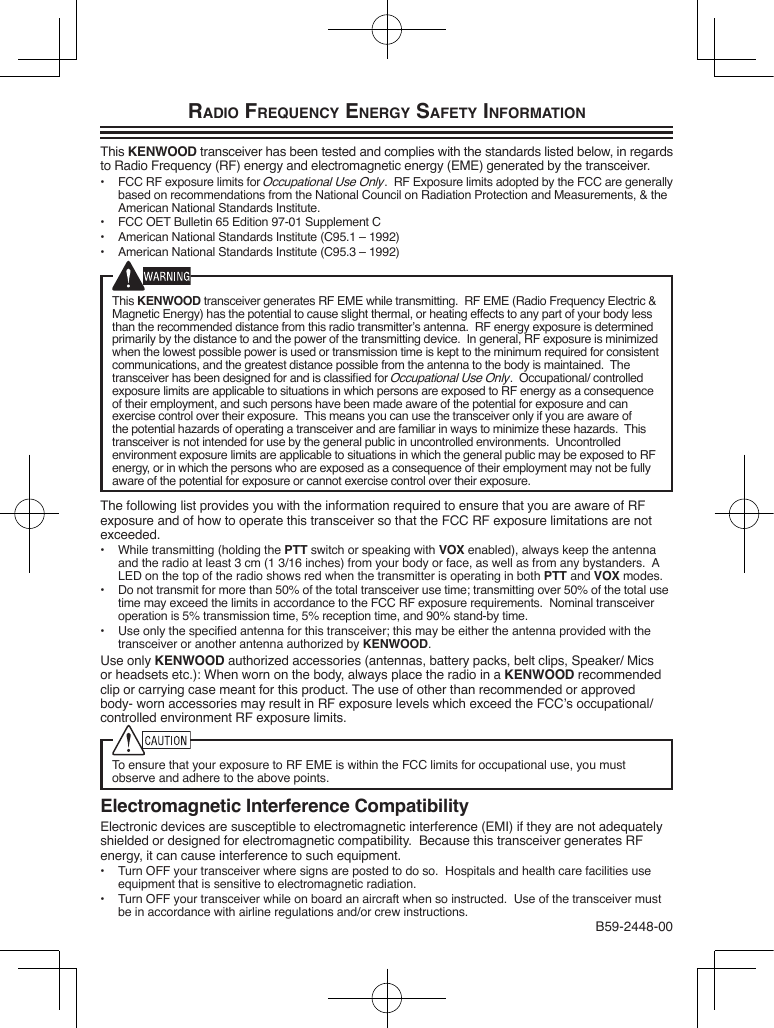Kenwood USA 378501 UHF FM Handheld/Portable/Mobile Transceiver User Manual Part 1
Kenwood USA Corporation UHF FM Handheld/Portable/Mobile Transceiver Part 1
Contents
- 1. User Manual Part 1
- 2. User Manual Part 2
- 3. User Manual Part 3
User Manual Part 1
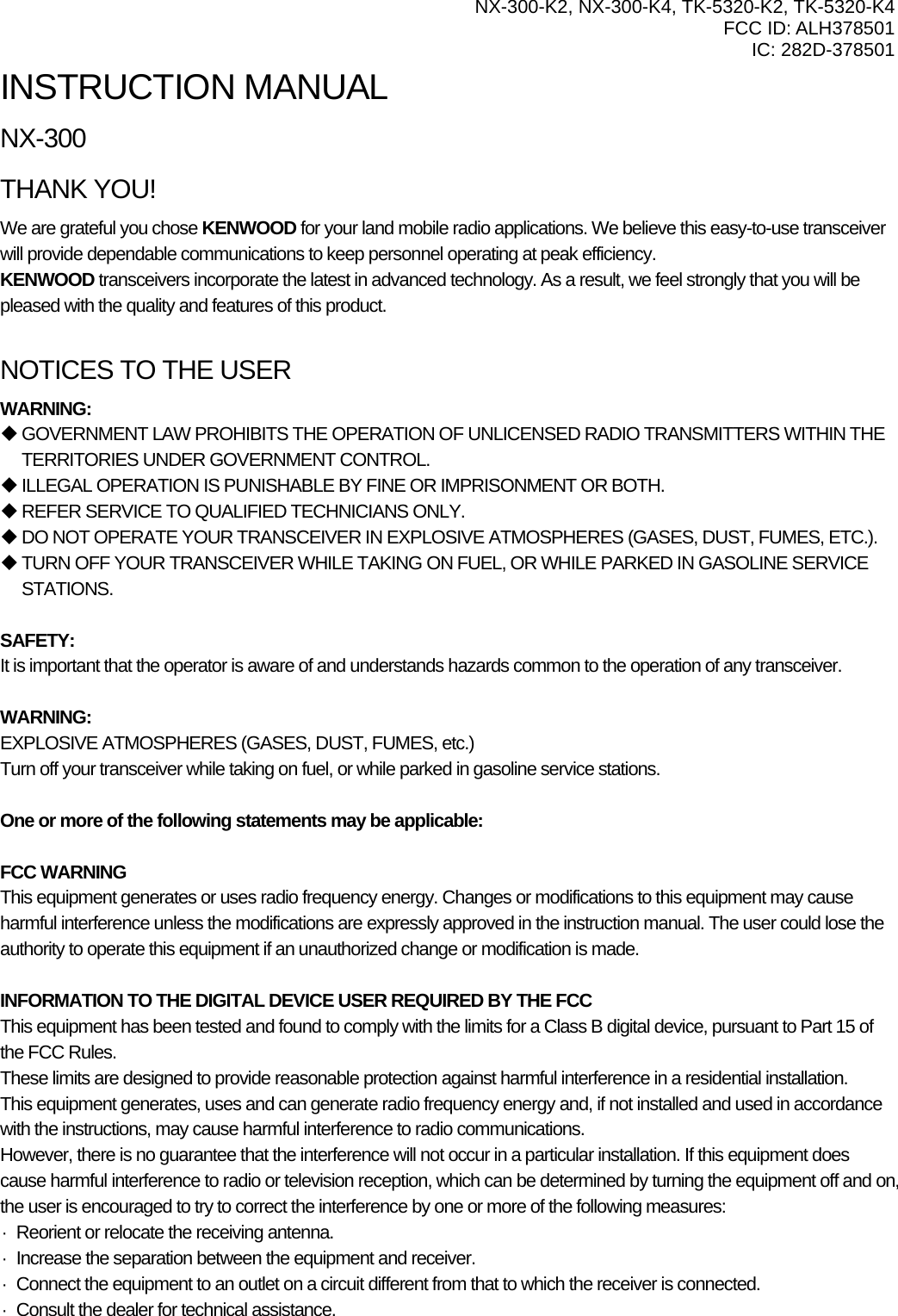
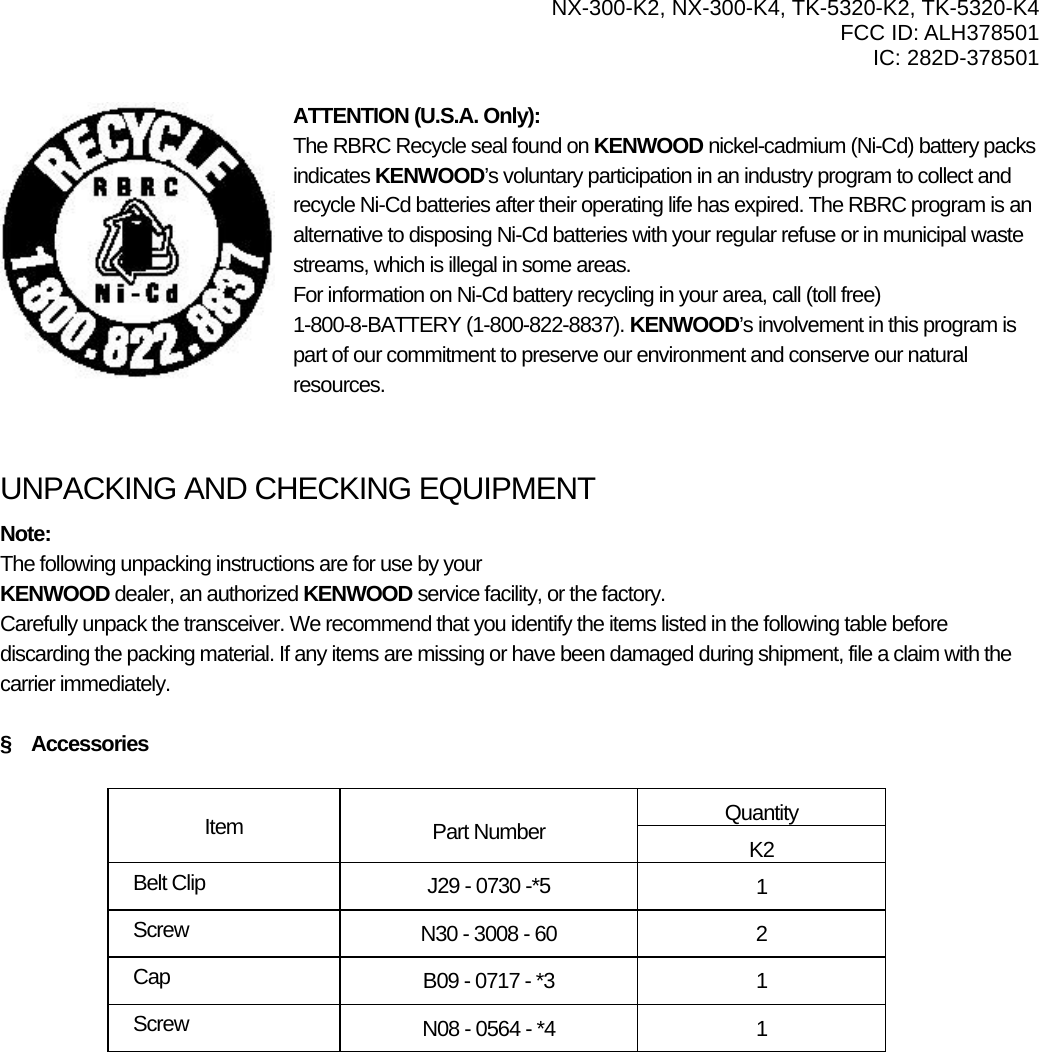
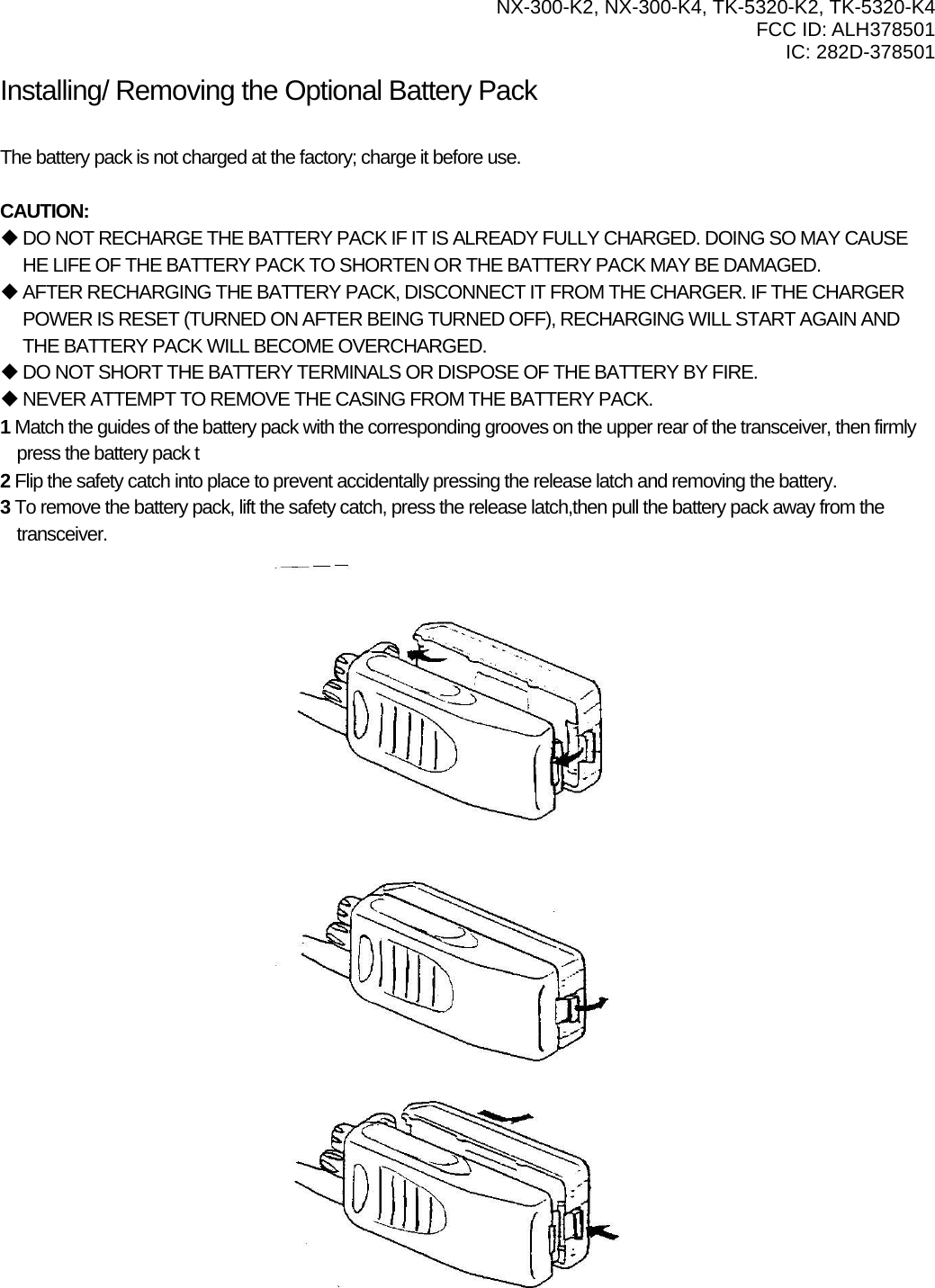
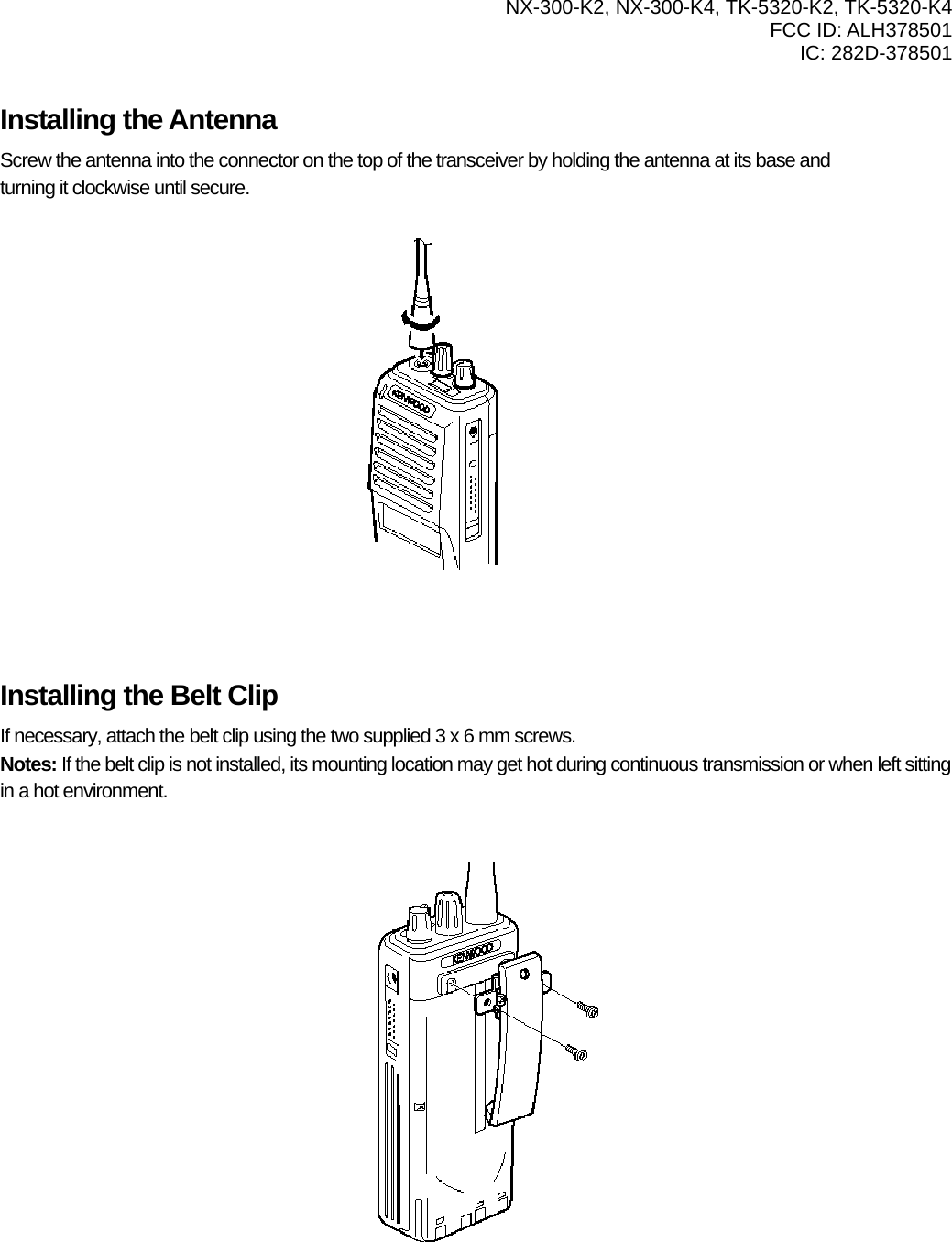
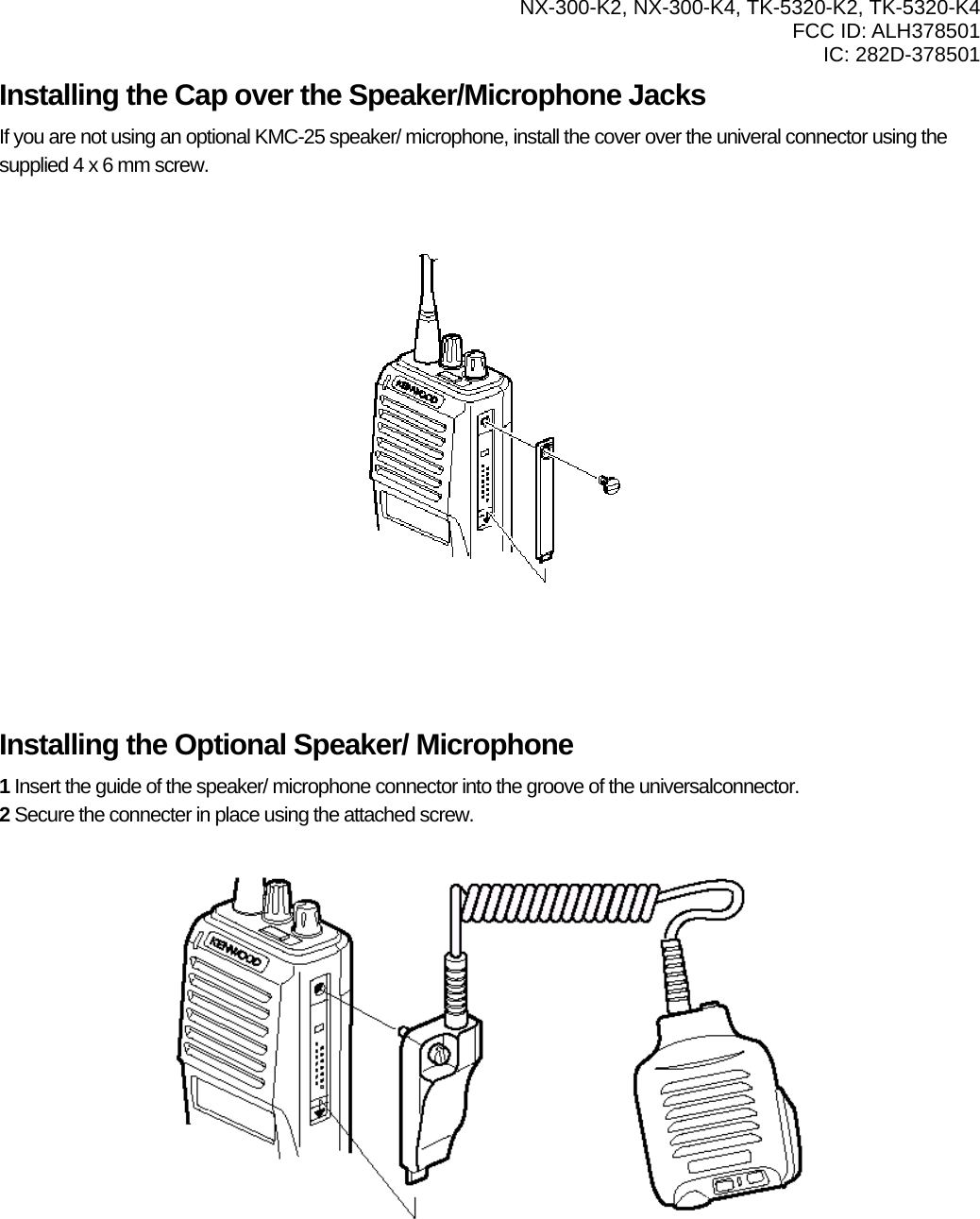
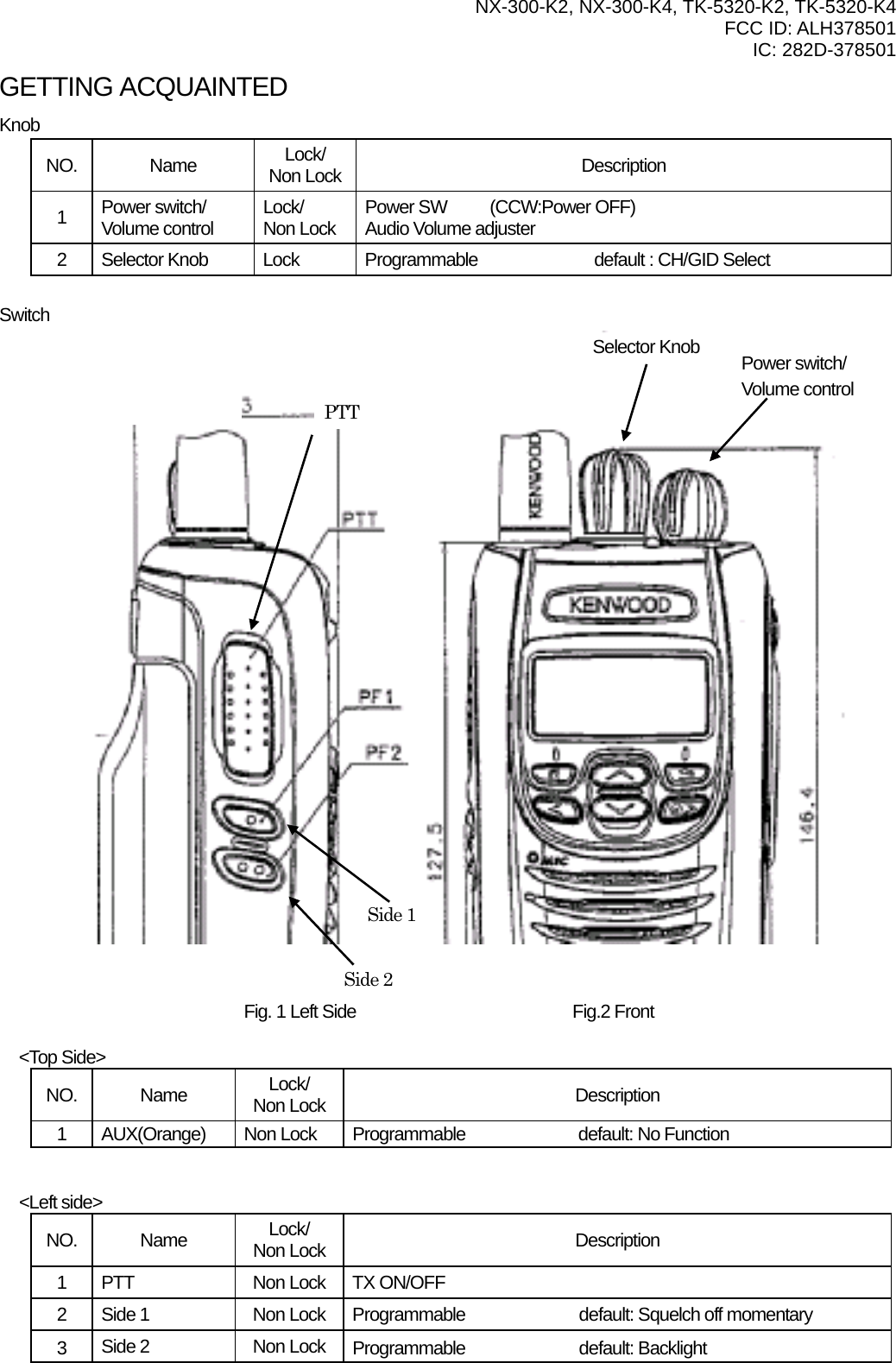

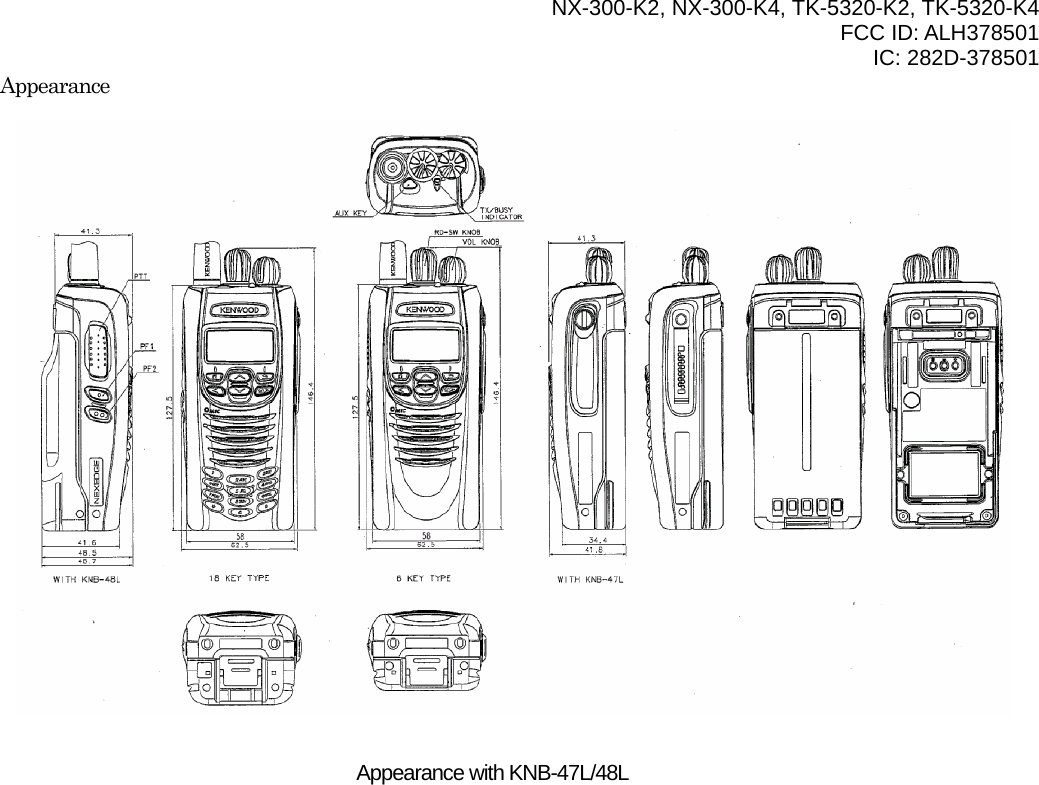
![NX-300-K2, NX-300-K4, TK-5320-K2, TK-5320-K4 FCC ID: ALH378501 IC: 282D-378501 OPERATING BASICSATING BASICS § Switching Power ON/OFF Turn the Power switch/ Volume control clockwise to switch the transceiver ON. Turn the Power switch/ Volume control counterclockwise to switch the transceiver OFF. § Adjusting the Volume Rotate the Power switch/ Volume control to adjust the volume. § Selecting a Channel Pressing [<B], [C>] to select a channel. Pressing [C>] increases the channel number and pressing [<B] decreases it. § Making a Call 1 Select the desired channel. 2 Press the Side1 key (Programmed function Squelch off) to determine whether or not the current channel is being used. • If the channel is busy, wait until it becomes free. 3 Press and hold the PTT switch, then speak into the microphone in your normal voice. • For best results, hold the microphone approximately 3 to 4 cm (1 1/2 inches) from your lips. 4 Release the PTT switch to receive. AUXILIARY FEATURES § Time-out Timer (TOT) The TOT is used to automatically inhibit transmission after a specified time elapse. If the PTT switch is held down for longer than specified time, the transceiver will stop transmitting and a tone will sound. Release the PTT switch, then press it again to continue transmitting.](https://usermanual.wiki/Kenwood-USA/378501.User-Manual-Part-1/User-Guide-1008365-Page-9.png)
